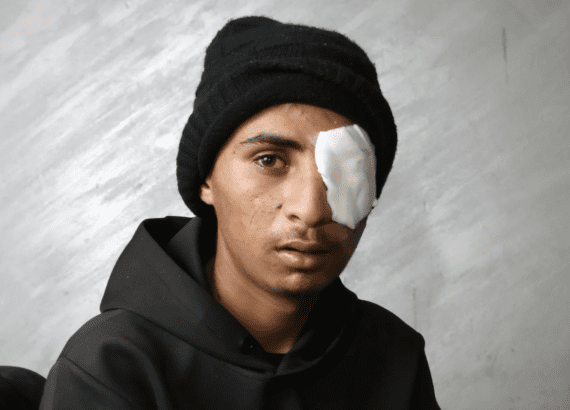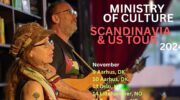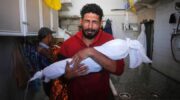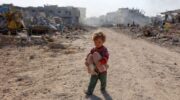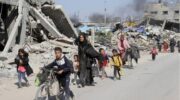16-year-old Abdullah Tarabin lost an eye when he was hit by a sponge-tipped bullet.
Israeli soldiers’ sponge-tipped bullets are more dangerous than they sound, and with few restrictions on their use against Palestinians. In recent days, they caused 16-year-old Abdullah Tarabin to lose an eye. Bassem sustained three fractures in his jaw, Taleb’s skull was smashed, and Obeideh and Uday were injured in their faces.
by Nati Yefet, reposted from Ha’aretz, February 7, 2022
It’s been two weeks since his eldest son, Abdullah, lost his left eye to a hard sponge-tipped police bullet, but Mohammed Tarabin, a soft-spoken 38-year-old man, still finds it difficult to work up the courage to tell his family.
“I’ve lied to everyone,” he told Haaretz, explaining that he hasn’t been able to share the news that the 16-year-old has permanently lost his sight in the eye.
“My wife is constantly looking at him and crying. I’m afraid that if I tell her, something will happen to her. He’s her child. She’s been raising him for 16 years. How can someone suddenly come and shoot him? I can’t tell my mother either. I’m afraid. I tell her that we’re waiting for a response from the doctor, that it’s still unclear due to the inflammation.”

The truth is that the picture is quite clear. When his son was released from the hospital after five days at Soroka Medical Center in Be’er Sheva, doctors told the father that his son’s sight in his left eye had been lost and that he would be fitted with a glass eye.
Tarabin, a father of nine, works as a metalworker in Be’er Sheva by day and as a guard in the nearby Bedouin town of Rahat at night. “They called me from home in the afternoon and said the police were using tear gas that had entered the house,” he recounted two days after the January 23 incident, which took place in the Bedouin community north of Be’er Sheva where they live and which is also called Tarabin.
“I got there in 20 minutes and told the police that there were small children there and kidney patients and that they should stop what they were doing. When I approached the policemen, they fired stun grenades at me. I told them, ‘What’s with you? I have nothing in my hands.’ I yelled at them to stop shooting there.”
He said the police fired dozens of tear gas canisters in the vicinity of his house and those of his extended family.
[Subscribe to Ha’aretz to receive daily news from the region]
The incident began when children threw stones at the police near a house where a search for weapons was being conducted several hundred meters from Tarabin’s home. Six or seven policemen then gave chase. Tarabin insisted that his own children had not been involved in the stone-throwing.
“I have a sister who just had a kidney transplant. My brother’s wife is undergoing dialysis, and I have small children,” he said. “They sustained a thick cloud of gas inside the house. I was also choking.”
Tarabin’s house was the farthest removed from the site of the original clash with the children that was target by the police. When the police began retreating to a single staging area, one officer stood on a ramp at the edge of an animal pen in the family’s compound, he said.
“I walked toward them, and he immediately threw four stun grenades at me. I continued forward. I wasn’t afraid. It’s my house. He was standing there, near an iron stake, and I got close to him. The small children were crying the whole time due to the smell [of tear gas] and from fear. I told the police to leave. ‘If someone is bothering you, go deal with them. Why are you coming to us? Why are you going into a house with nothing in it?’”
“He told me to leave before he shoots me,” Tarabin said. “I moved a few meters closer to the house when suddenly I saw my boy fall to the ground.”
Abdullah had been shot in the eye by the hard sponge-tipped bullet. According to Tarabin’s account, the policeman fired at his back from a distance of 12 meters (39 feet) as Abdullah was about 25 meters from his father.

Mohammed Tarabin, the father, said he thinks the policeman was actually aiming at his head and missed, instead hitting Abdullah, who was behind him in the line of fire.
“That policeman should stand trial,” he said. “Let him explain to the judge why he did what he did. If my child has to be afraid in his own home, I don’t want to live like that. What the police are conducting is a hate operation.”
The police said in response that “with regard to operations in Tarabin, during a search for weapons in the house of a suspect, forces entered the village. Stones were thrown at police vehicles. That intensified near the suspect’s house, directed at police and requiring them to use [crowd] dispersal measures. The suspect was detained for questioning after nothing was found in his home. At the end of the operation, there was a disturbance in which 50 rioters took part. Crowd dispersal means were used. A Border Policeman was injured by a stone that hit his leg and damage was caused to vehicles.”
More lenient rules
A 2014 Haaretz investigation by Nir Hasson found that the police had replaced use of 30 gram (1 ounce) sponge-tipped bullets with harder ones weighing twice as much with a 40 millimeter (1.6 inch) diameter. It is the heavier version that remains in use today by the police in the Negev. It was also such a bullet that was responsible for the death of a boy from Jerusalem’s Wadi Joz neighborhood, Mohammed Sunuqrut, in 2014.
According to the Association of Civil Rights in Israel, 35 Palestinians were injured by this heavier version of the bullet between July 2014 and the end of 2016. Sixteen of them were minors and 28 of the victims, including 12 minors, were hit in the head.
Seventeen lost their sight in one or both eyes. Among the injuries sustained by the others were shattered jaws and teeth, multiple facial bone and skull fractures, brain hemorrhaging and irreversible brain damage.

On January 1, 2015, the operations division of the Israel Police issued guidelines on the use of the heavier which is fired with a rifle with a telescopic sight. The guidelines limited its use to the most serious of circumstances.
Among the five pages of guidelines, only two sentences are highlighted and underlined. They direct the police to aim for rioters’ lower extremities and not to use the bullet against the elderly, against children or against visibly pregnant women.
In June, the operations division issued a revised, less stringent version of the guidelines. The use of the rifle is still only permitted in the most serious of circumstances, but the restrictions on targeting the elderly, children and pregnant women, now adds – to the extent possible.
Twelve other provisions of the guidelines remain classified “so as not to disclose operational methods.” It’s unclear if any of them relate to the prior directive to aim at the lower extremities. The police did not respond when Haaretz asked about the matter.
On January 13 of this year, 44-year-old Bassem Abu-Rabia was one of four Bedouin hit in the head by the hard sponge-tipped bullets within minutes of the start of a demonstration on Route 31 at the Molada junction east of Be’er Sheva. The protest was held at the end of a week in which tree planting by the Jewish National Fund on land that the Bedouin had been farming led to violent clashes in the Negev.
Haaretz also has information regarding three other individuals who were hit in their upper bodies – an elderly man and a 60-year-old man who were hit in the back and a young social activist who was hit in his shoulder. When asked about the cases, the police said that everything was carried out “in accordance with the required approvals.”
Unlike many Bedouin who live in villages that were established without the necessary planning permission, Abu-Rabia lives in the officially recognized community of Kuhla, between the Yatir forest and Route 31. He is the grandson of Sheikh Hamad Abu-Rabiah, the first Bedouin member of the Knesset, elected in 1974.
הסרטון שבו בסאם אבו רביעה מנסה לעצור את ידויי האבנים. pic.twitter.com/y8jXmxmUgH
— Nati Yefet (@ntiyft) February 6, 2022
He and his family owned land on which the Nevatim air base and the the Kseifa local council offices were built. As compensation, the family received the land where Kuhla is located.
“I had worked in my family business my entire life,” Bassem Abu-Rabia told Haaretz. “From 1993 until a year ago, I drove a tractor in a quarry on my family’s land, not far from here. I’m married with seven children. My family was never against the government. The entire town of Kseifa was on land that we donated to the government. We are law-abiding citizens.”
Young men in his family still enlist in the Israeli army to this day.
“It was a demonstration approved by the police,” he said, referring to the January 13 incident in which he was wounded in his face.
“No one blocked the highway or even stepped off the sidewalk. Everyone was behind the guardrail, until the officer in charge used a megaphone to say we could block the highway for ten minutes. It was only then that people began moving onto the highway. We didn’t throw stones or anything, but then I was surprised to hear the officer calling for the highway to be cleared,” he said.
“Before [the policeman] finished speaking, we heard three stun grenades exploding,” Abu-Rabia recounted. “That’s how it started, with kids, older people and women on the highway. Suddenly they began firing gas as well as bullets at people.”
“I started going back to the area near the road and told the young people who had already been hit by the police not to throw stones,” Abu-Rabia said in describing the initial moments of the confrontation. “I have it filmed. I immediately saw three people fall after being hit. I saw an older man lying by the roadside, along with a younger guy.”
The video and photos that he presented show him accompanying an older man away from the flash point and waving at younger people in an effort to calm them down.

But not more than two minutes after the clash began, he was hit in the face by a sponge-tipped bullet, he said. Two weeks later, he was still weak and found it difficult to talk.
“I have a face injury that I will suffer from for my entire life. I have three fractures in my jaw. Everything is shattered. I had metal plates inserted under general anesthesia at Soroka. I still have stitches and require lengthy treatment. It’s difficult to talk since I can only bring my teeth together on one side. That will be sorted out only after several teeth are extracted and others implanted in their place.”
“Now, when my older boy goes to the grocery, I’m afraid of what might happen, due to the racism,” Abu-Rabia claimed. “I’m even afraid when he takes his daughter to the doctor. We’re no longer citizens. We’re viewed differently. But we’ve been here from before the country was established and I am a citizen of the State of Israel.”
A light finger on the trigger
Taleb Sa’ida, 39, is lying in the neurosurgery department at Soroka Medical Center. A sponge-tipped bullet fractured the right of his skull in the initial minutes of the clash with police on Route 31 on January 13, and he was brought to the hospital for emergency surgery. Two weeks later, he was still too weak to talk. It’s difficult to assess if and when he might return to his job at the Hod Hefer meat plant in Kiryat Malakhi, where he has been employed for the past 12 years.
His older brother Khader, a teacher in the Bedouin community of Umm Batin, wasn’t at the demonstration. But he recounted what he had heard from those who were there. Taleb nodded to confirm the details.
“He came to the demonstration with his young children, aged 5 and 12, to express what we are demanding. They stood in the first row and within seconds of the beginning of the commotion, he got a bullet in the head. The 5-year-old fainted from the tear gas. Taleb was operated on that night and was sedated and on a ventilator for four days. He’s tired, and the whole family is traumatized. This is someone who goes to work at 5 in the morning, returning at 6 in the evening. He wasn’t involved in stone-throwing or anything like that,” the brother said.

Two cousins from the Al-Batihat family, 17-year-old Obeideh and Uday, 20, of the unrecognized village of Al-Ghara, were also injured at the demonstration. They speak very little Hebrew, and the conversation with Obeideh was conducted through a translator.
“We stood there like everyone else. We came to protest the JNF planting. When they started using force to disperse us, they used tear gas. We saw that an older man was apparently choking from the gas and falling to the ground. We went to help him and, almost at the same time, we were hit. It was just as the wave of tear gas had begun.”
Like Abu-Rabia, the cousins were injured in the face and lost teeth. Obeideh also had to have pins inserted in his jaw. Uday received stitches.
At the time of the clashes over the tree planting, Marwan Abu Freih, a Negev branch coordinator for the Adalah Legal Center for Arab Minority Rights in Israel, ran a project providing legal representation to those detained. The cases presented in this article are only the most extreme examples of police violence against demonstrators and detainees, he said.
“The serious injuries show the unjustified use of life-threatening means,” he said. Abu Freih then made reference to the Or commission, the state commission of inquiry that examined violent clashes in 2000 between Israeli Arabs and the police in which 13 Arabs and a Jew were killed.
“Just as the Or commission prohibited the use of rubber-coated metal bullets to disperse demonstrations, these hard bullets must also be prohibited,” he said. “This is violent police oppression that receives permission for a light finger on the trigger to maintain a regime of ethnic supremacy and racial segregation,” he claimed.
With regard to the demonstration at the Molada junction, the police said in response that they have been dealing for the past several weeks with a small group of law-breakers who have disturbed the peace and acted violently near the junction. “Dozens of protesters began throwing stones, endangering the lives of motorists and the police at the scene,” the police statement said, adding that they dispersed the crowd in compliance with police procedure and 11 people at the scene have been indicted.
In situations involving violent disturbances of the peace, police procedure permits the use of the sponge-tipped bullets, the police statement said, “and police on the ground conduct themselves in accordance with the rules,” the statement added.
[Subscribe to Ha’aretz to receive daily news from the region]
RELATED READING ON ISRAEL’S EXCESSIVE FORCE:
- Israeli soldier kills Jamil Abu ‘Ayyash in “excessive use of force”
- Amnesty Int’l: Israeli forces carry out violent hospital raids in ruthless display of force
- Israeli soldiers kill Palestinian child in occupied West Bank
- Israel lies after soldiers choke and kill Palestinian boy
RELATED READING ON PALESTINIAN BEDOUIN:
- Israeli harassment of Palestinian Bedouin village won’t let up
- Cleansing the Negev: Israel plans to evict “tens of thousands” of Palestinian Bedouin
- Palestinian senior citizen dies after hit-and-run by Israeli police
- Israel to demolish home of 95-year-old disabled Palestinian woman in Negev
VIDEOS:

